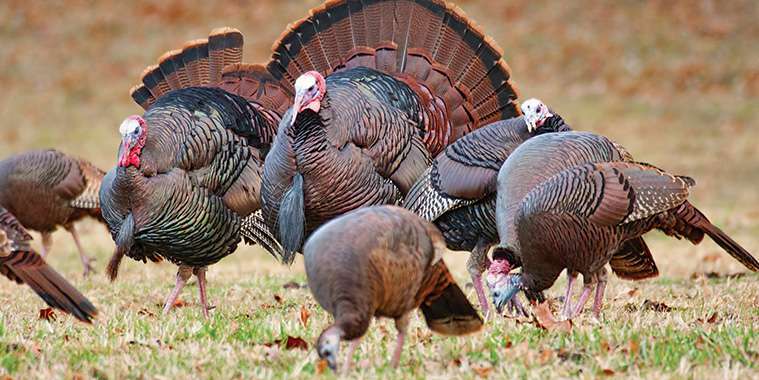By Dorothy Dobbie
Wild turkeys are often attracted by your bird feeder or fruit tree, acorns from your oak trees or seeds from your evergreens. They can do a lot of damage as they enjoy buds, stems and leaves of certain plants, shrubs and trees although they also eat seeds and bugs, small snakes, and snails. Their droppings are none to pleasant either.
To discourage them, empty feeders, clean up nuts or other fruits and try placing stakes tied with mylar streamers at eye level (three to four feet) around your yard. Or invest in a motion detector that will spray water when tripped.
Wild turkeys can be found in most provinces in Canada, but it wasn’t always so. The native range of the Eastern wild turkey extended north into New Brunswick, Quebec and Ontario and there were a few of a different variety (the smaller Merriams) in southern Alberta and British Columbia, all of which were hunted to extinction. Neither species extended into Manitoba.
However, in 1958, 16 wild turkeys were released near the town of Miami. This flock now numbers about 10,000!
Often in spring, a Tom will select four females for his harem. The female will lay 10 to 15 eggs. After about 28 to 29 days, eggs hatch and offspring leave the nest within 24 to 36 hours to begin foraging for themselves. The poults, as they are called, will stick with mom for the summer, and then the males (jakes) will leave to join a flock of adult males, while the females (jennies) will join an adult female flock.
The jake has a short, hairy beard that he wears on his puffed up chest. This beard will continue to grow, reaching nine inches or even longer, until his name changes to Tom. The jenny is small and petite, about half his size and quite beardless. She too will change her name, this time from Jenny to Hen, as she becomes an adult. Sometimes, when older, she too will grow a beard.
The male is an excellent singer and dancer, softly gobbling and drumming while strutting his stuff with his tail well fanned. She hunkers down, demure and docile, letting him walk all over her (a practice known as “treading”) in preparation for the ultimate act. Dominant toms often get a close relative to help in the mating game – the assistant male never gets to mate, but his brother more than makes up for that in the number of offspring (up to seven times more) he fathers due to his brother’s help in the courtship.
Turkeys have quite a vocabulary. Males gobble a siren song to females while they drum their chests. Females yelp to tell males about their willing location and to call their chicks to order. Both can purr
(signals contentment); cluck (to get attention); putt (alarm call); cutt (signal excitement); cackle (leaving or returning to roost); kee-kee (young bird crying “I’m lost”); and whine (indicating aggravation or on a cooler note, just chilling while feeding).
Yes, wild turkeys can fly. So can domestic ones but only for short distances as they are weighted down with fat for our dinner tables. Some are so fat they can’t even mate so domestic turkeys are artificially inseminated. The average flight speed of the wild turkey is about 60 mph or (97 kmh). They run pretty fast, too, and have been clocked 25 mph. Wild toms weigh in at about 18 pounds on average. The hens average weight is around 10 pounds. The heaviest wild turkey on record was 37 pounds!
Dorothy Dobbie is the publisher of Manitoba Gardener magazine. 204-940-2700 for subscriptions or localgardener.net. You can listen to her on CJNU Nostalgia radio every Sunday morning at 8 at 93.7 FM, on channel 725 BellMTS TV or go to CJNU.ca



